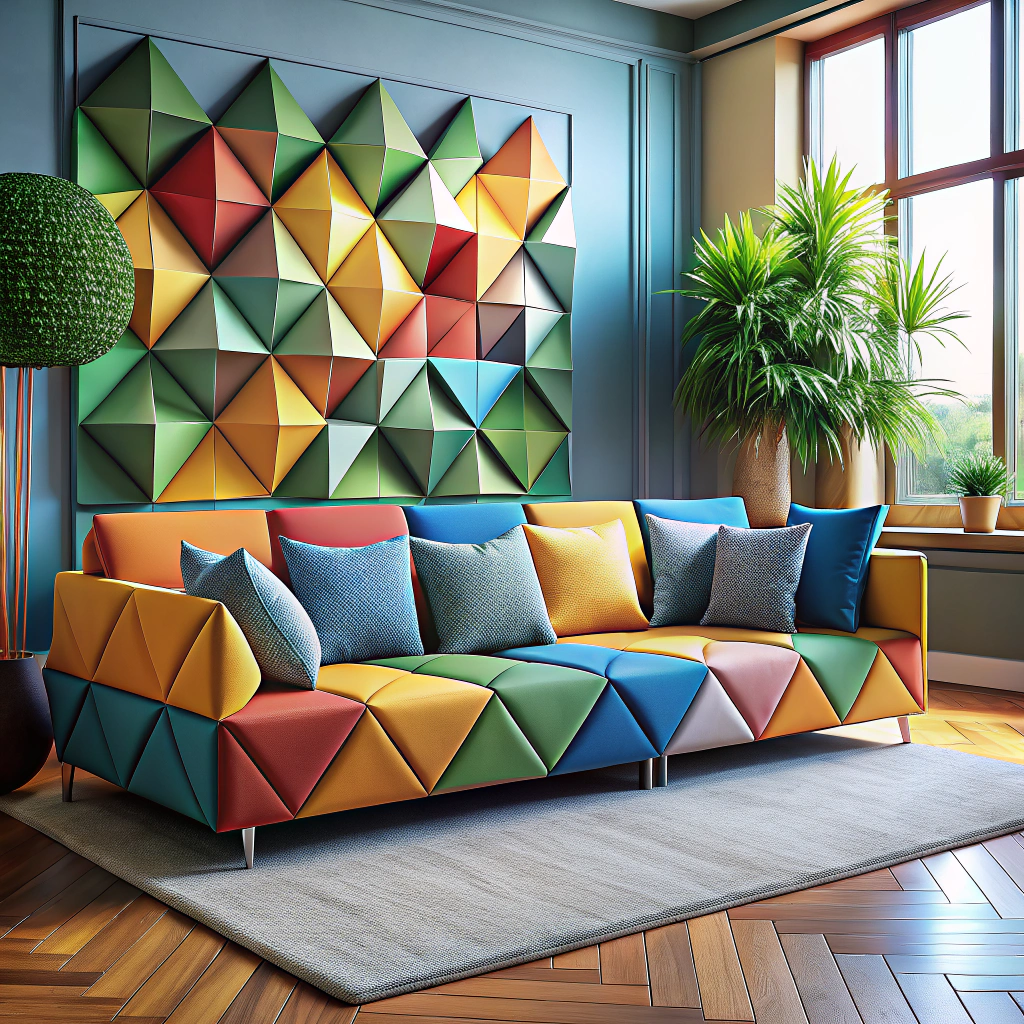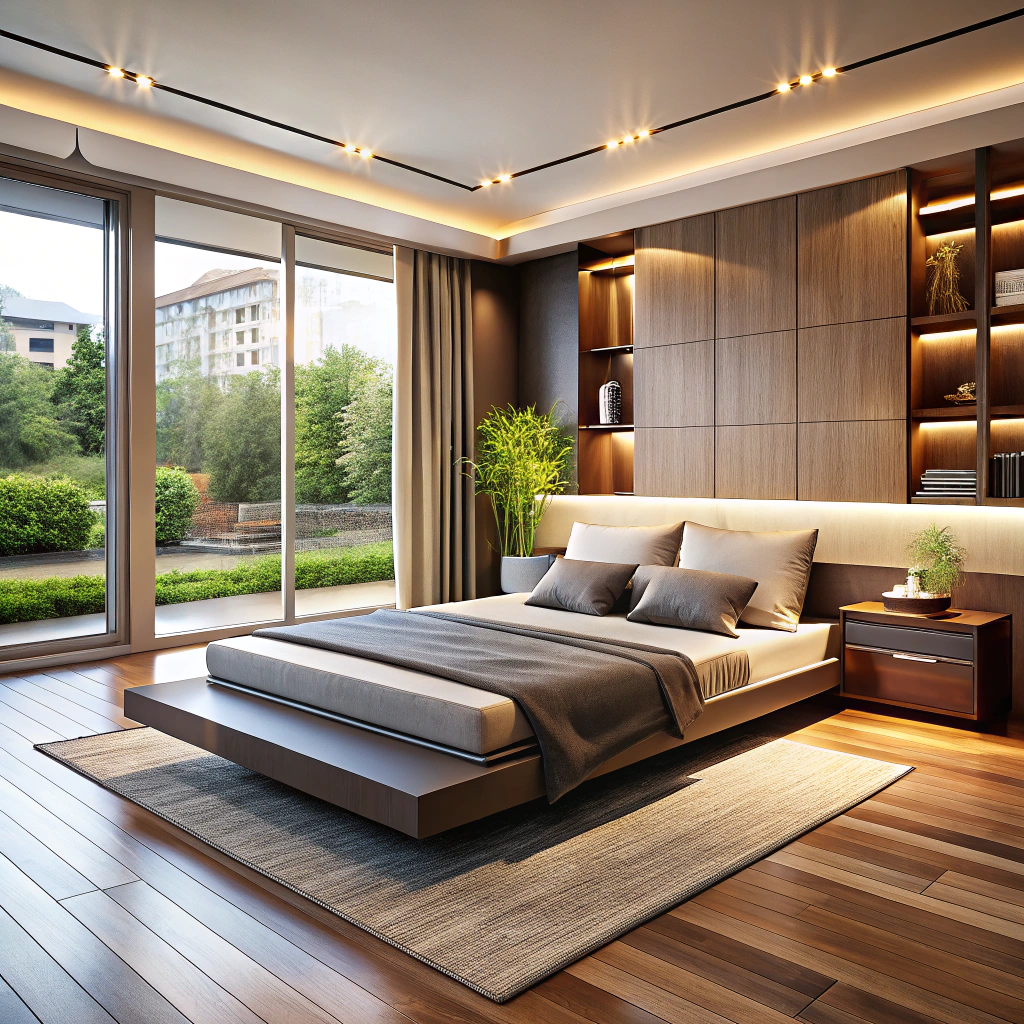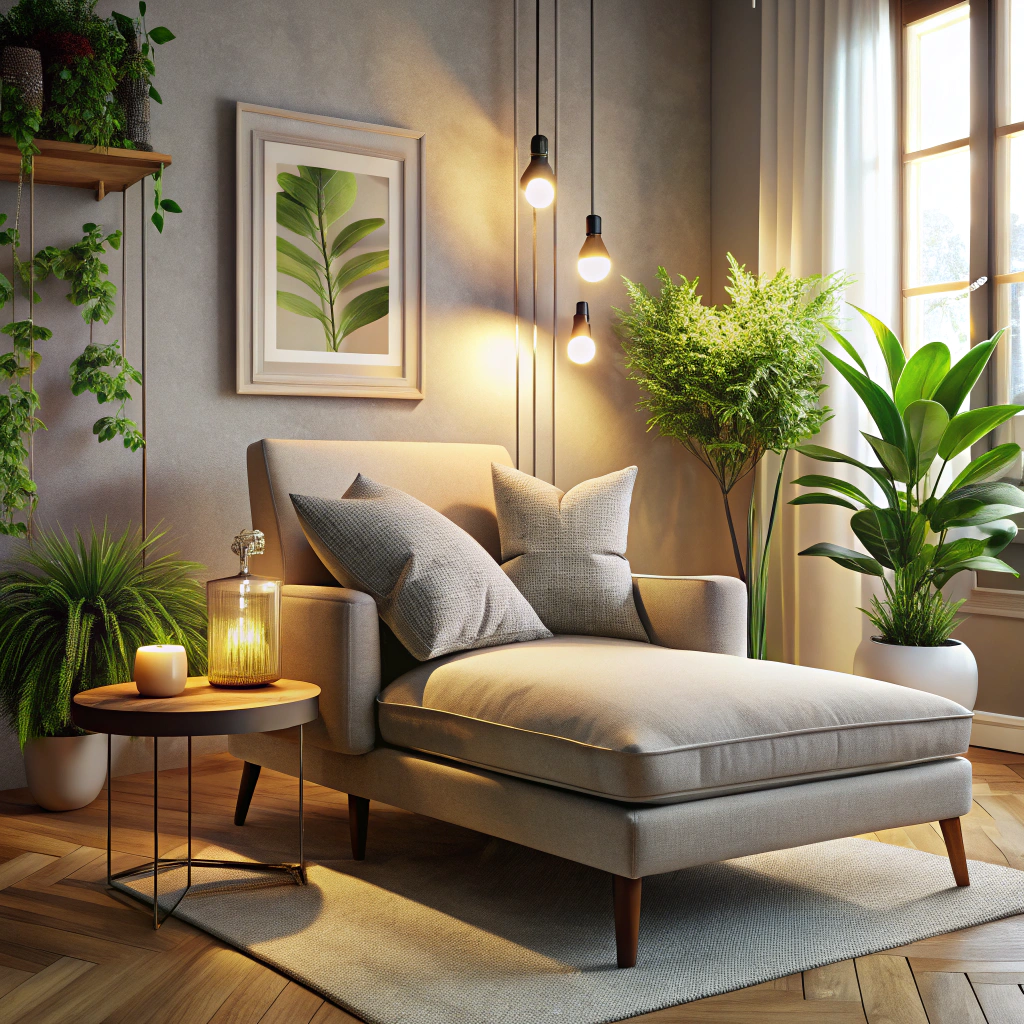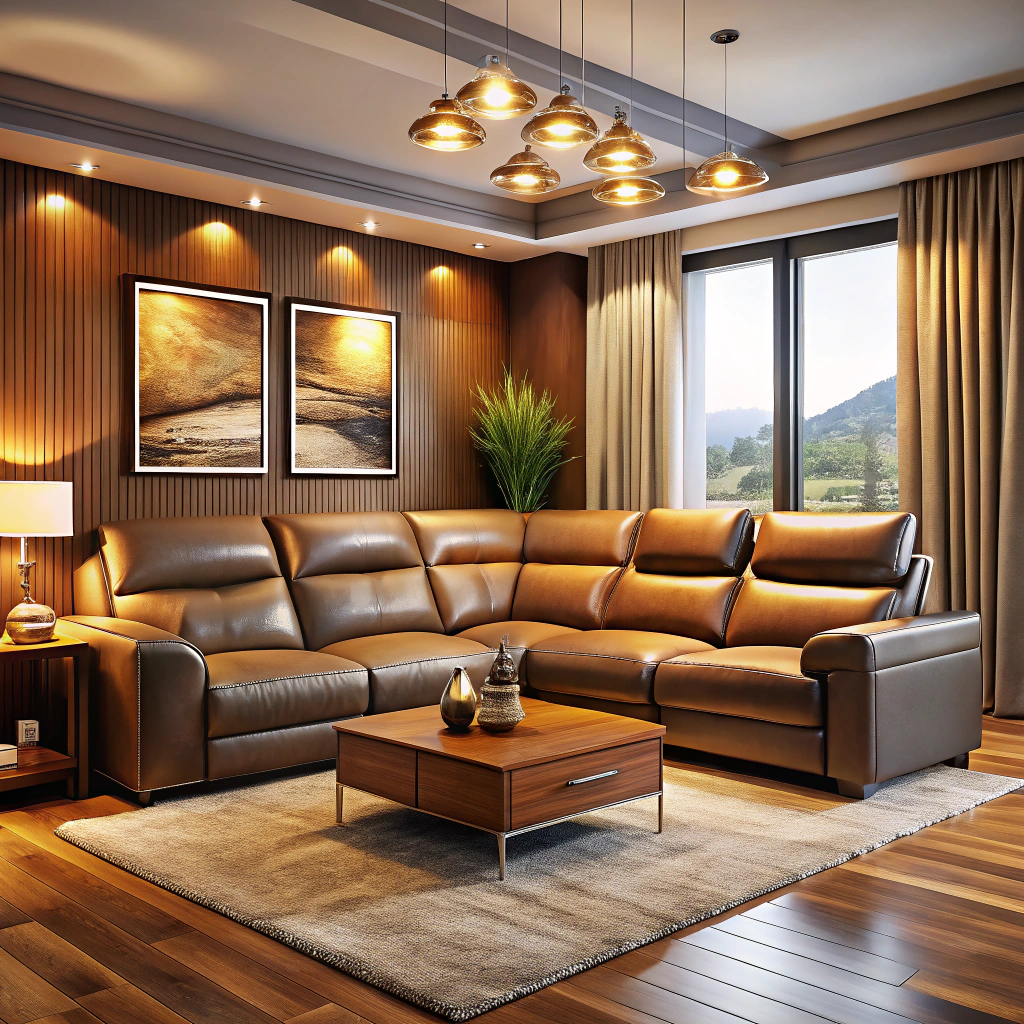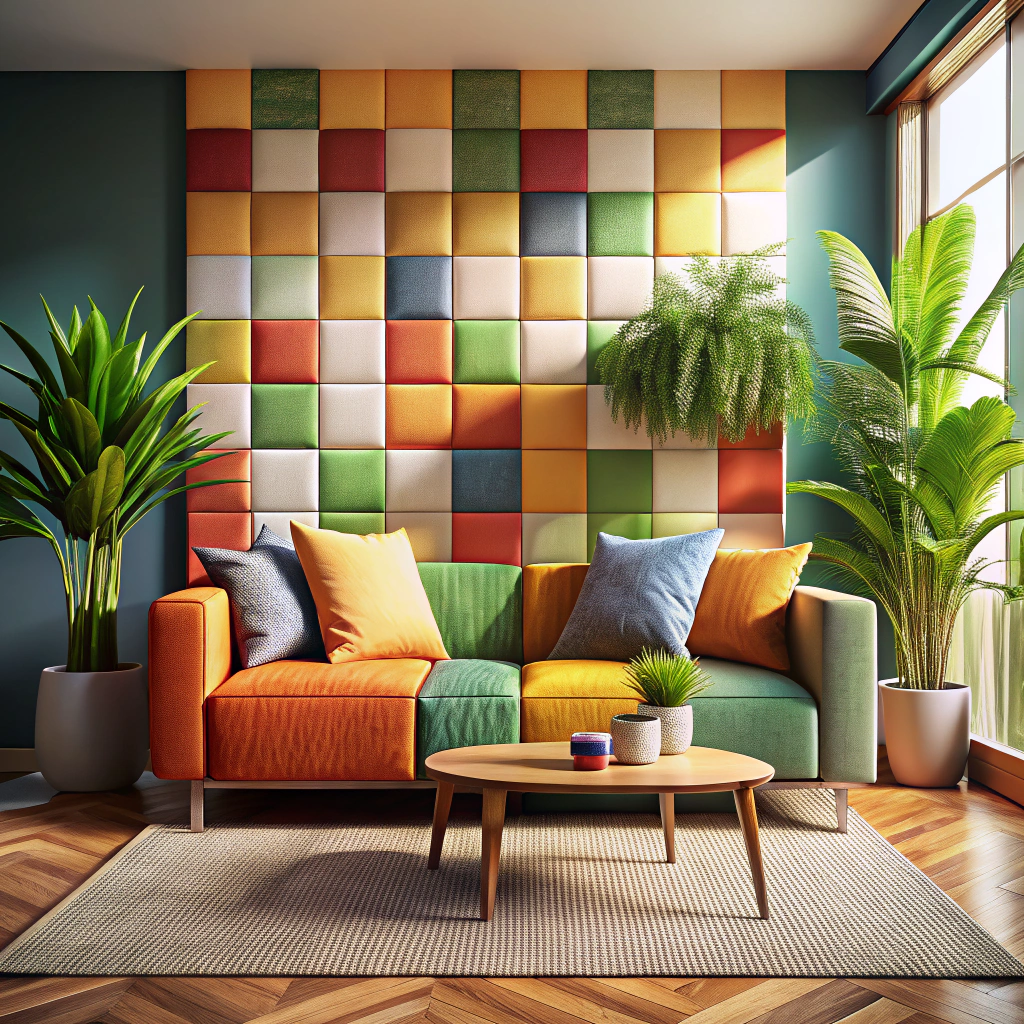Last updated on
Discover the perfect rug size to complement your couch and coffee table, creating a harmonious living space that exudes style and comfort.
When it comes to decorating your living room, choosing the right rug size can make all the difference. A well-placed rug can tie together your furniture and create a cozy atmosphere for you and your guests.
But with so many sizes and styles available, it can be overwhelming to know where to start. In this article, we’ll focus on one of the most common questions: what size rug should you choose for your couch and coffee table? We’ll explore different options and provide tips on how to select the perfect rug for your space.
So grab a cup of coffee, sit back, and let’s dive in!
Table of Contents
What Size Rug For Couch And Coffee Table?
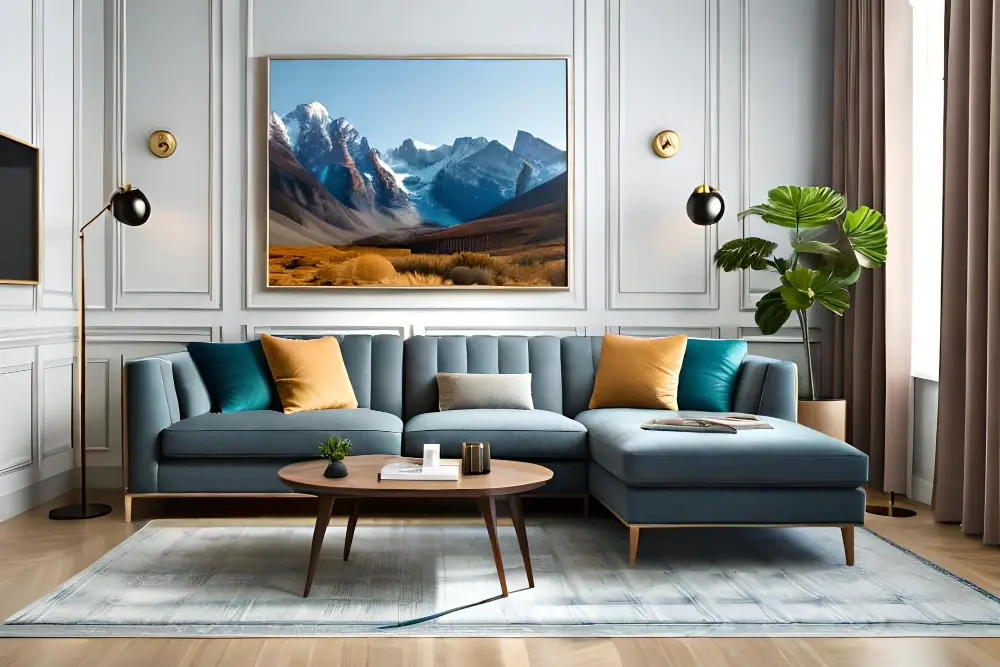
Before we dive into the specifics of choosing a rug size for your couch and coffee table, let’s go over some basic guidelines. The first thing to consider is the size of your room.
A larger room can accommodate a bigger rug, while a smaller space may require something more compact.
Another important factor is furniture placement. If you have an open floor plan with multiple seating areas, you’ll want to choose rugs that define each space without overwhelming them.
When it comes to selecting the right rug size for your living room, there are three main options: small (5′ x 8′), medium (8′ x 10′), and large (9′ x 12′). Of course, these sizes are just general guidelines – ultimately it depends on the dimensions of your furniture and how much floor space you want covered.
Rug Size Basics

The first thing to consider is the size of your room. A larger room can accommodate a bigger rug, while a smaller space may require something more compact.
Another important factor is furniture placement. If you have an open floor plan with multiple seating areas, you’ll want to choose rugs that define each space without overwhelming it.
When selecting a rug size for your living room, keep in mind that it should be large enough to anchor all of your furniture comfortably on top of it. This means that at least the front legs (or ideally all legs) of sofas and chairs should be on the rug.
Room Layout Considerations
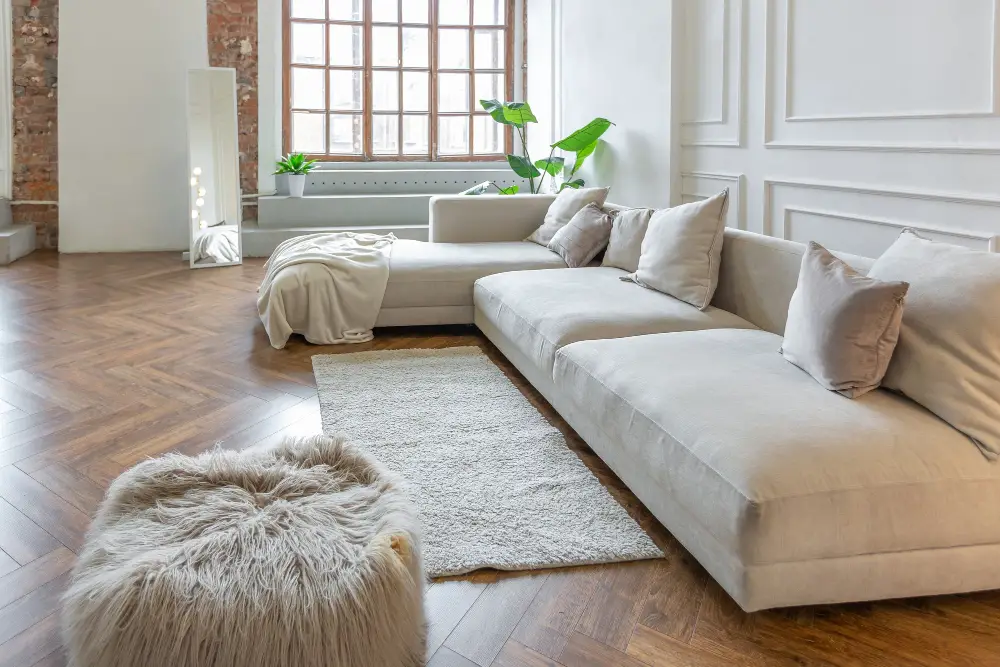
The placement of furniture can greatly impact how a rug looks and feels in a space. For example, if you have a small living room with limited floor space, you may want to choose a smaller rug that doesn’t overwhelm the area or make it feel cramped.
On the other hand, if you have an open-concept living area with multiple seating areas or large pieces of furniture like sectionals or oversized sofas and coffee tables, then opting for larger rugs can help define each zone while still creating visual harmony throughout.
Another consideration when thinking about layout is traffic flow. If people will be walking through your living space frequently (e.g., from one part of the house to another), then choosing an appropriately sized rug that allows for easy movement without tripping hazards is essential.
Couch Size and Style
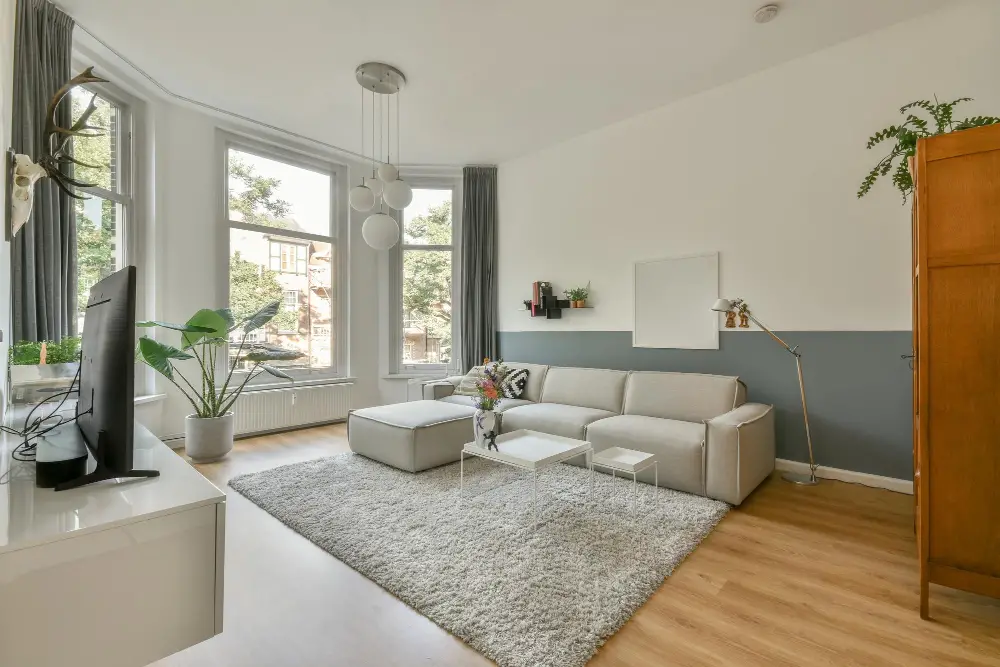
A larger couch will require a bigger rug, while a smaller one can be paired with a more modestly sized option. The style of your sofa should also play into your decision-making process.
For example, if you have an L-shaped sectional or chaise lounge that extends out from the main seating area, you may need to opt for an oversized rug that accommodates this unique shape.
On the other hand, if you have a traditional three-seater sofa with two armchairs flanking it on either side – known as “conversational” seating – then choosing a rectangular or square-shaped rug that fits snugly under all pieces of furniture is likely best.
Coffee Table Dimensions
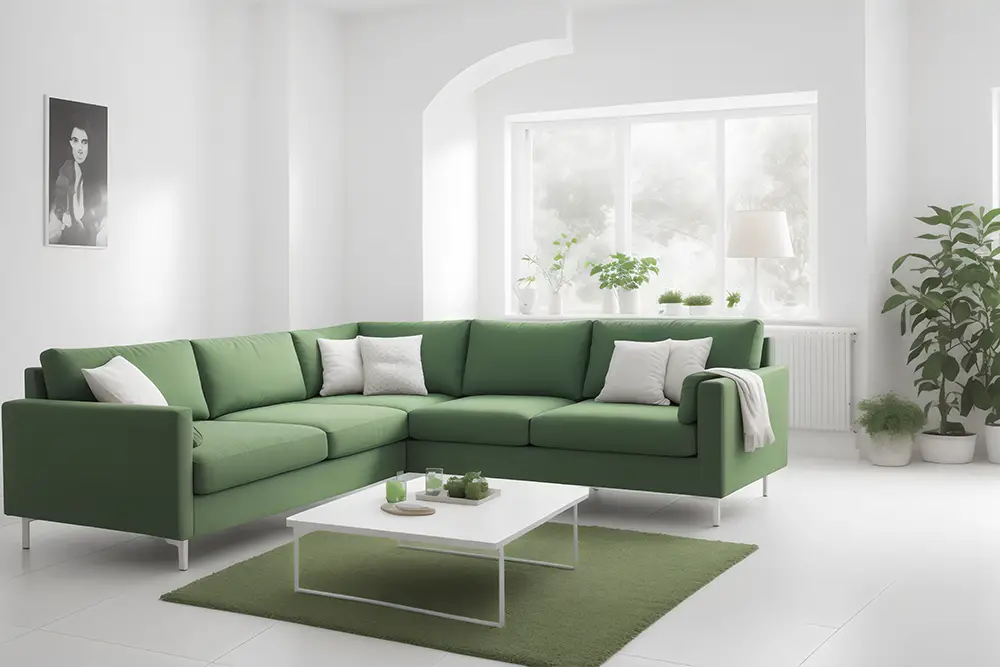
The size and shape of your coffee table can affect how much of the rug is visible and how well it complements your furniture. A general rule of thumb is to choose a rug that extends at least 6 inches beyond each side of the coffee table.
This ensures that there’s enough space for people to walk around without tripping over the edges.
If you have an oversized or irregularly shaped coffee table, consider using multiple smaller rugs instead of one large one. This can create an interesting layered effect while still providing ample coverage for your seating area.
Keep in mind that while standard rectangular rugs are popular choices, circular or oval-shaped rugs can also work well with round or oval-shaped tables respectively.
Choosing the Perfect Rug Size
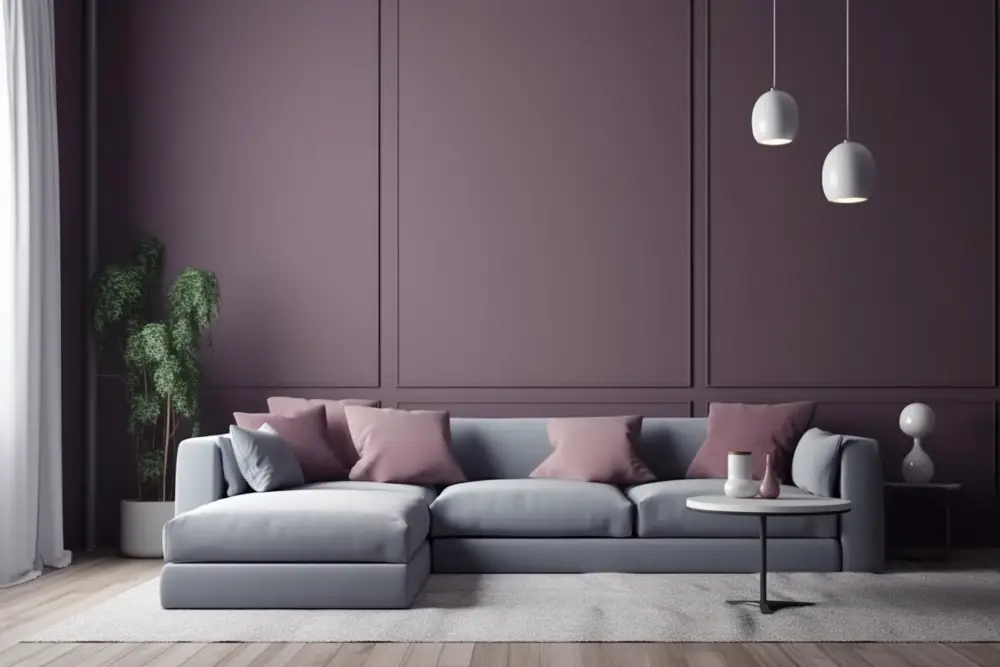
First and foremost, you’ll want to think about the layout of your space. If you have an open floor plan with multiple seating areas, you may need more than one rug to define each area.
Next, consider the size and style of your couch. A larger sectional will require a bigger rug than a smaller loveseat or armchair.
You’ll also want to take into account any other furniture in the room that will be sitting on or near the rug.
Don’t forget about your coffee table! The ideal placement for a coffee table is typically centered over the middle of an area rug – so make sure that both pieces fit together harmoniously.
Rug Size and Placement Tips
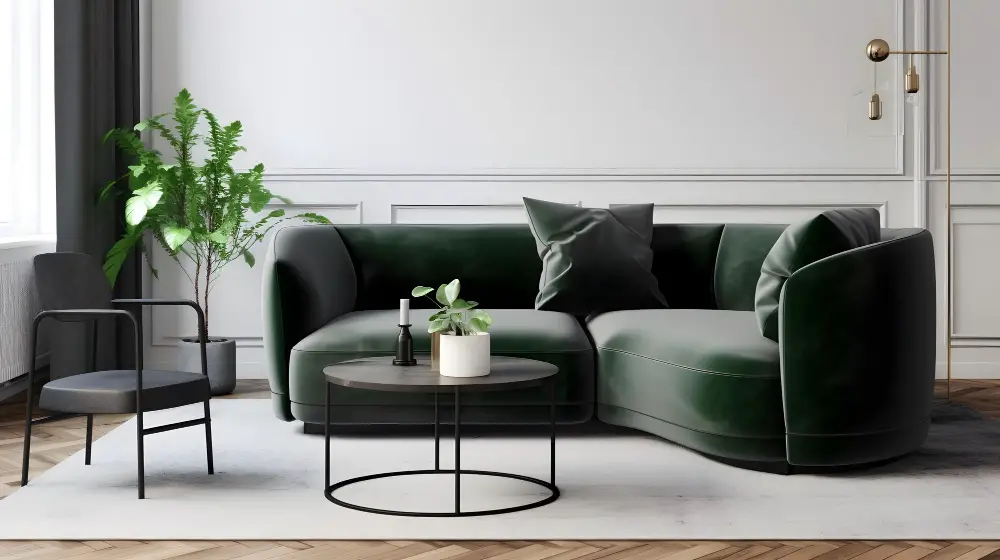
First, make sure your rug is large enough to fit all of your furniture comfortably on top. This means that at least the front legs of your couch and chairs should be on the rug.
If you have a smaller space or budget, consider using a smaller accent rug instead. Just make sure it’s placed in front of or between pieces of furniture rather than under them.
Another important factor is balance – aim for symmetry when placing rugs in larger rooms with multiple seating areas. For example, if you have two sofas facing each other across a coffee table, place an equal-sized area rug beneath each one.
Don’t forget about traffic flow! Make sure there’s enough space around the edges of your rugs for people to walk without tripping over corners or getting caught up in fringes.
Rug Shapes and Styles
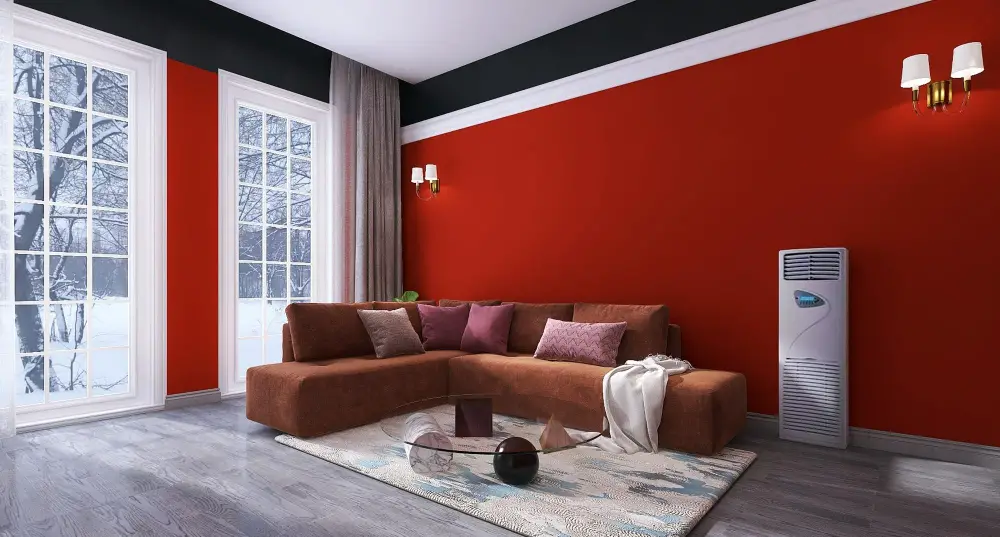
Rectangular rugs are the most common choice for living rooms, as they tend to complement the shape of most furniture arrangements. However, if you have a round coffee table or want to add some visual interest to your space, consider opting for a circular or oval-shaped rug.
Another popular option is an area rug with geometric patterns or bold colors that can make your living room pop. If you prefer something more subtle and timeless, neutral-colored rugs in solid hues like beige or gray can provide an elegant touch without overwhelming other elements in the room.
Ultimately, choosing the right shape and style depends on personal preference and how it fits into your overall design scheme. Keep in mind that while trends come and go quickly when it comes to home decor items like rugs; classic designs will always remain relevant over time.
When selecting a rug shape & style for under couches & coffee tables – rectangular is usually best but don’t be afraid of circles! Bold geometric patterns work well if you’re looking for something eye-catching while neutral tones offer elegance without being too overpowering.
Placement Tips and Tricks
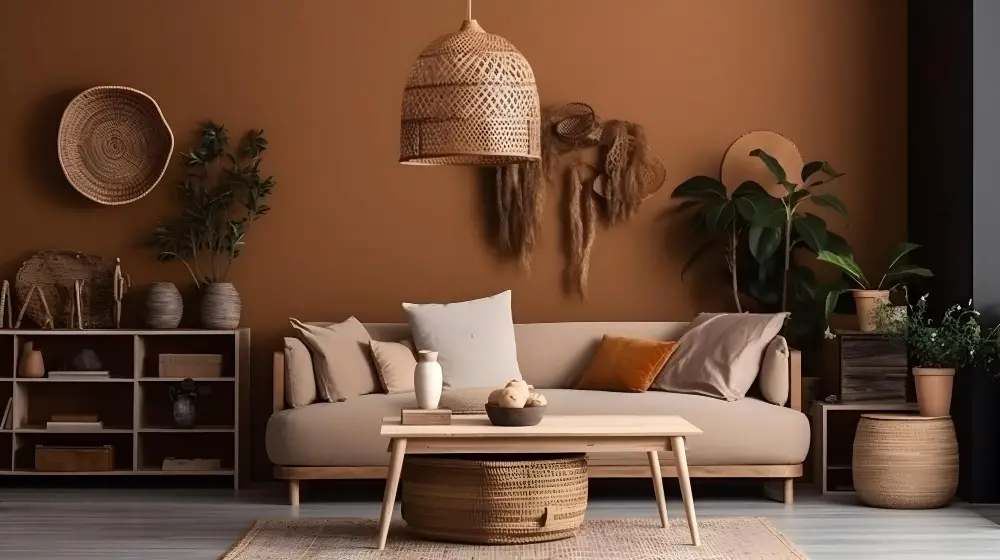
Here are some tips and tricks to help you get it just right:
1. Center the Rug: Make sure your rug is centered in the room, with an equal amount of floor showing on all sides.
2. Leave Space Around Furniture: Allow at least 6-8 inches of space between the edge of your rug and any furniture that sits on top of it.
3. Consider Traffic Flow: If people will be walking through or around your living room frequently, make sure there’s enough clearance so they won’t trip over a corner or edge.
4. Anchor Your Seating Area: Place all legs of sofas and chairs on top of the rug to anchor them in place and create a cohesive seating area.
5. Use Multiple Rugs if Necessary: If one large rug isn’t practical for your space, consider using multiple smaller rugs instead – just make sure they’re coordinated in style and color.
Balancing Furniture and Décor
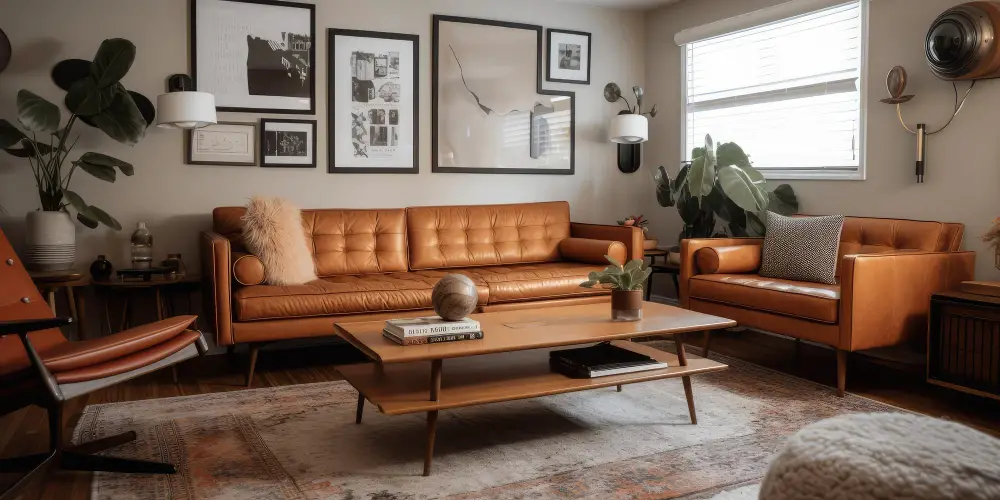
You want to create a space that feels cohesive and harmonious, without overwhelming the eye with too much furniture or décor. One way to achieve this balance is by choosing a rug size that complements your existing furniture and décor.
If you have a large couch or sectional, consider opting for an oversized rug that extends beyond the edges of your seating area. This will help anchor the space and make it feel more cozy and inviting.
On the other hand, if you have smaller pieces of furniture like armchairs or loveseats arranged around a coffee table, choose a rug size that fits snugly under all four legs of each piece. This will create an intimate grouping while also protecting your floors from scratches caused by shifting furniture.
Rug Size for Sectionals
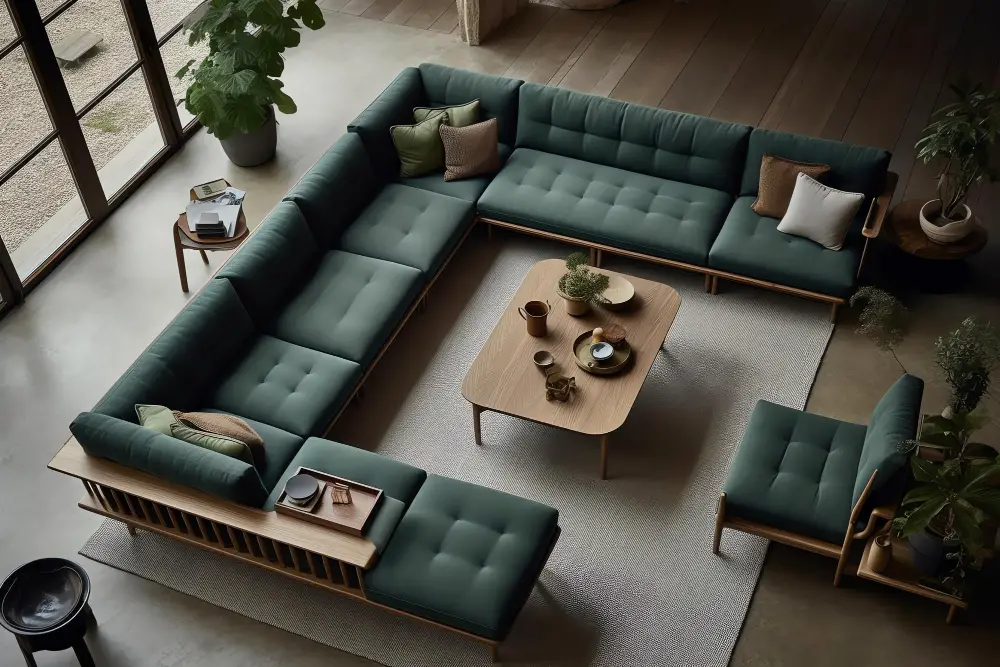
The key is to consider the shape and layout of your sectional. If you have an L-shaped or U-shaped sectional, it’s best to opt for a larger rug that covers all or most of the seating area.
This will help anchor your furniture and create a cohesive look.
For an L-shaped sectional, choose a rectangular rug that extends beyond both ends of the sofa on one side and at least halfway under on another side. For U-shape sectionals with two chaises facing each other in front of them, use two separate rugs placed perpendicular to each other.
Alternatively, if you prefer having multiple smaller rugs instead of one large piece covering everything up – place runners along either end so they meet in front where people sit down (or vice versa).
Standard Rug Sizes
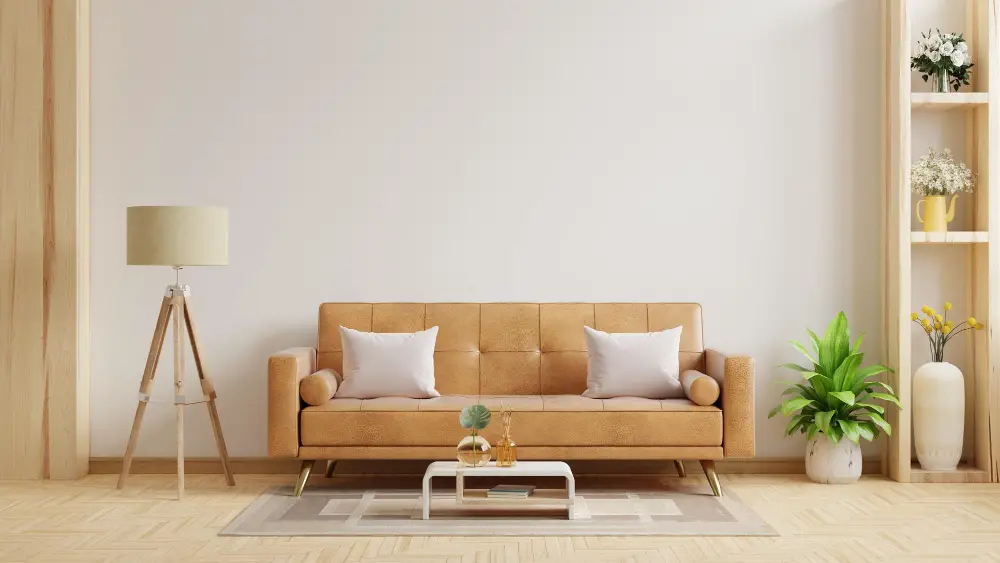
Standard sizes range from small accent rugs to large area rugs that cover most of the floor space in your living room. The most common sizes for living rooms include 5’x8′, 6’x9′, and 8’x10′.
These sizes work well with standard-sized couches and coffee tables, providing ample coverage without overwhelming the space.
If you have a larger living room or an open-concept layout, consider opting for a larger rug such as a 9’ x12’. This size will help anchor your furniture while creating visual interest in an expansive area.
It’s important to note that these are just general guidelines; every home is unique and may require custom sizing or unconventional shapes.
Custom Rug Solutions
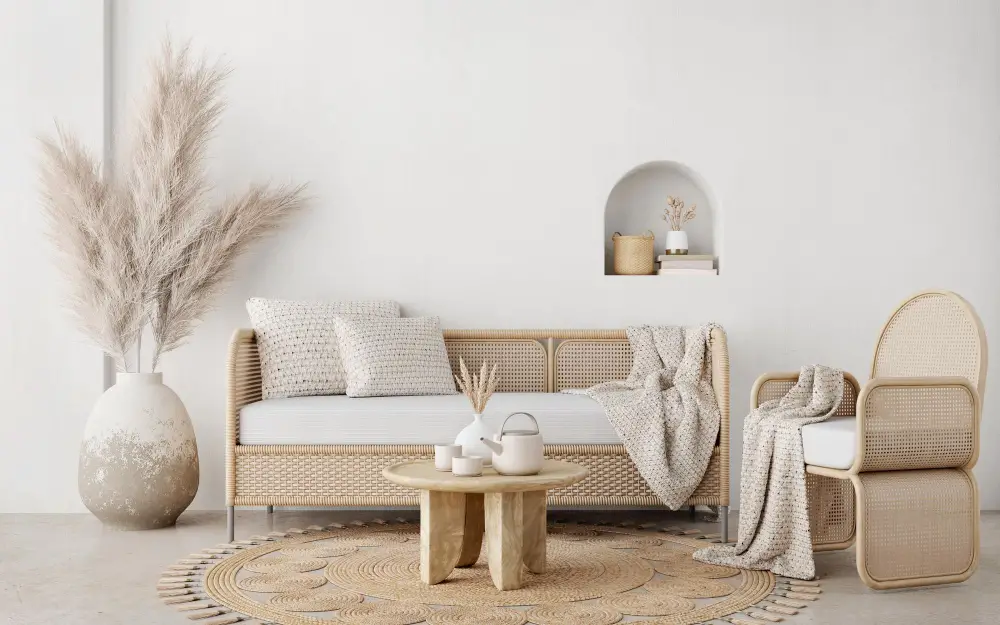
In this case, custom rug solutions may be the answer. Custom rugs are made to order and can be tailored to fit your specific needs and preferences.
You can choose from a variety of materials, colors, patterns, shapes and sizes that will perfectly complement your couch and coffee table.
When considering custom rugs for your living space it is important to work with an experienced professional who understands how different elements come together in interior design. They will help you select the right material based on traffic flow in your home as well as durability requirements.
Custom rugs also offer flexibility when it comes to shape – round or oval shaped area rugs are great options if you want something other than rectangular ones which tend to dominate most spaces.
While they may cost more than standard-sized area rugs off-the-shelf at retail stores; investing in a high-quality custom-made rug is worth every penny because of its longevity compared with cheaper alternatives that wear out quickly over time due their inferior quality construction methods used during manufacturing process.
Rug Care and Maintenance
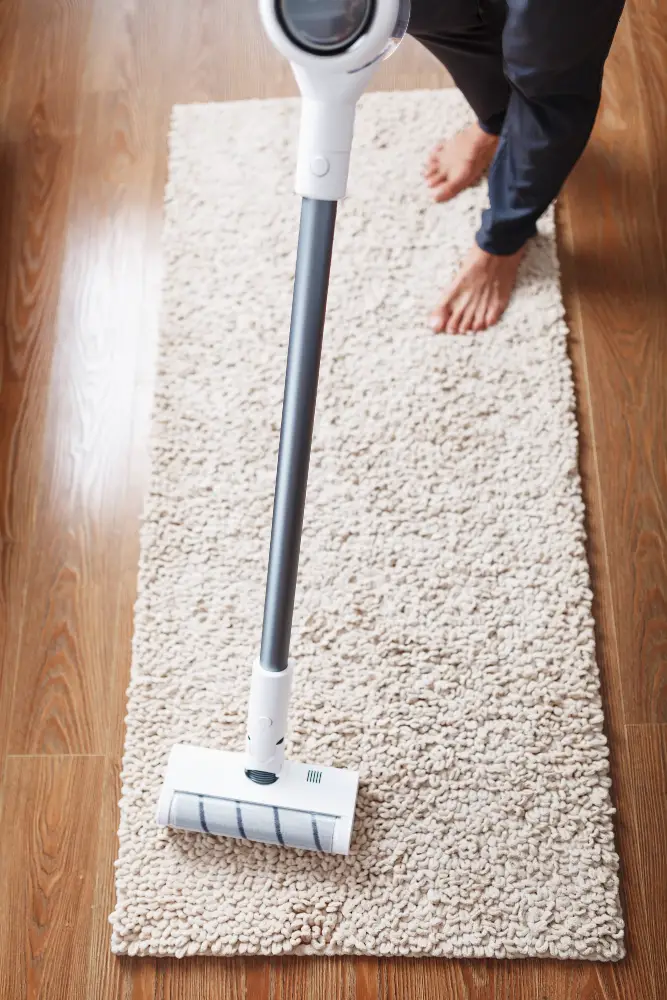
Regular maintenance can help extend the life of your rug and keep it looking its best. Here are some tips on how to care for and maintain your area rug:
1. Vacuum regularly: Dirt, dust, and debris can accumulate in a rug over time, so vacuuming at least once a week is recommended.
2. Rotate periodically: To prevent uneven wear patterns from developing in high-traffic areas or under furniture legs, rotate your area rugs every six months.
3. Spot clean spills immediately: If you spill something on your rug, blot up as much liquid as possible with a clean cloth or paper towel right away before using any cleaning products.
4. Use professional cleaning services when necessary: For deep-cleaning needs or tough stains that won’t come out with spot treatment alone (such as pet urine), consider hiring professional carpet cleaners who specialize in area rugs.
Considering Coffee Table and Sofa Proportions
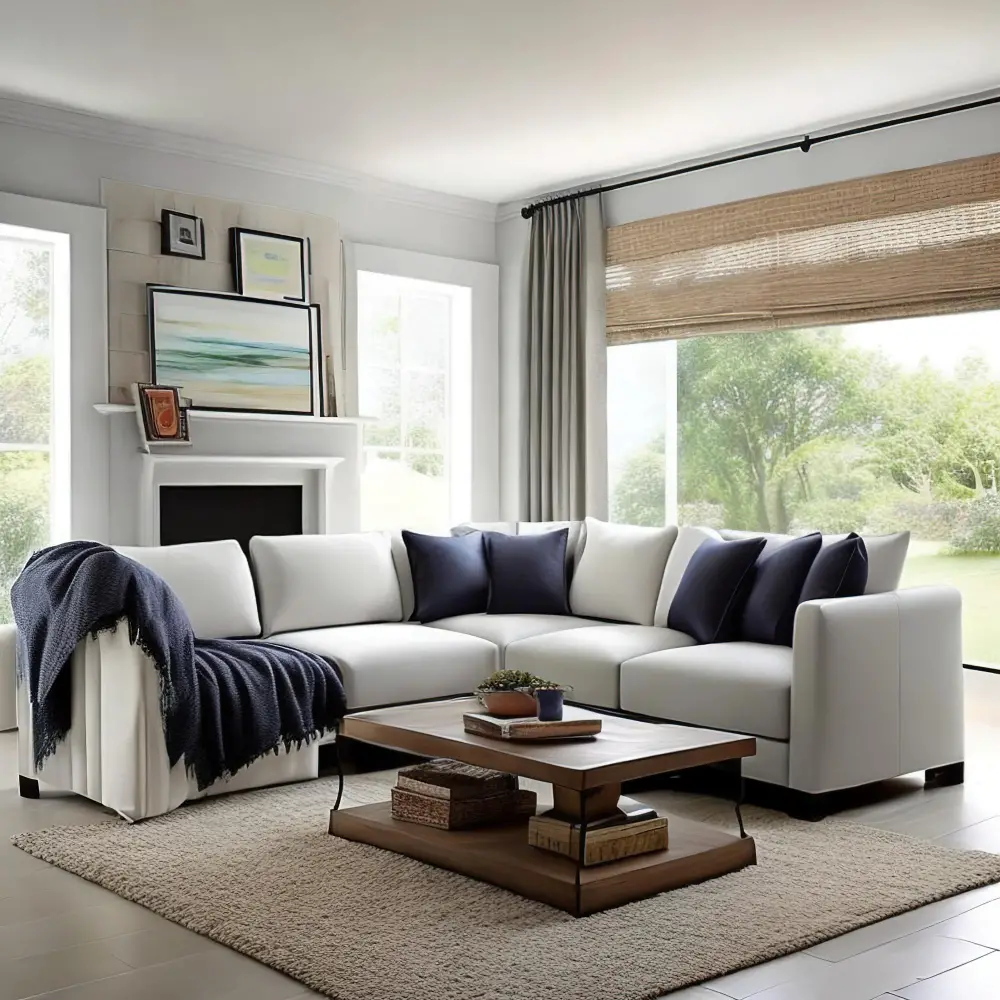
The goal is to create a balanced look that complements both pieces of furniture without overwhelming them. A good rule of thumb is to choose a rug that’s slightly larger than your coffee table but doesn’t extend beyond the edges of your sofa.
This will help anchor the space and create a cohesive look.
If you have an L-shaped sectional, consider placing two smaller rugs on either side instead of one large one. This can help define each section while still tying everything together visually.
Another factor to keep in mind when considering proportions is height – both with regards to furniture and rugs themselves. If you have low-profile seating or a shorter coffee table, opt for thinner pile or flatweave rugs so as not to overwhelm the space with too much texture or thickness.
Round and Rectangular Rugs for Different Coffee Table Shapes

If you have a round coffee table, consider pairing it with a round or oval-shaped rug. This creates an organic flow and softens the edges of the furniture arrangement.
On the other hand, if you have a rectangular or square-shaped coffee table, opt for either another rectangular/square shaped area rug or even try layering two rugs together (one larger than another) to create visual interest and depth.
Rug Material and Weave Options
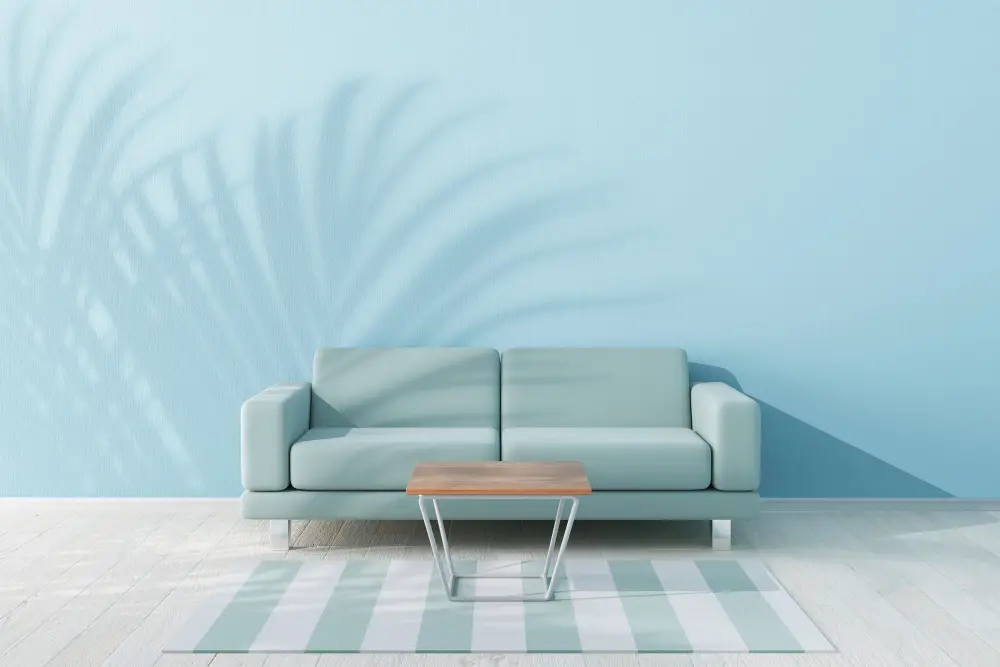
The right material can affect how your rug feels underfoot, its durability, and even its maintenance requirements. Some popular materials for rugs include wool, cotton, silk, jute or sisal.
Wool is a classic choice that’s soft to the touch yet durable enough for high-traffic areas. It’s also naturally stain-resistant which makes it easy to clean up spills.
Cotton is another versatile option that works well in many different spaces due to its affordability and ease of cleaning.
Silk rugs have an elegant look but require more care than other materials since they’re delicate fibers prone to damage from moisture or heavy foot traffic.
Jute or Sisal are natural fiber options with earthy tones perfect for adding texture while still being durable enough for everyday use.
The weave of your rug can also impact both appearance and function. Flatweave rugs tend to be thinner making them ideal choices if you want something low-profile while plush pile weaves offer more cushioning underfoot but may not work well in high-traffic areas where dirt could get trapped between fibers.
Benefits of a Rug Pad
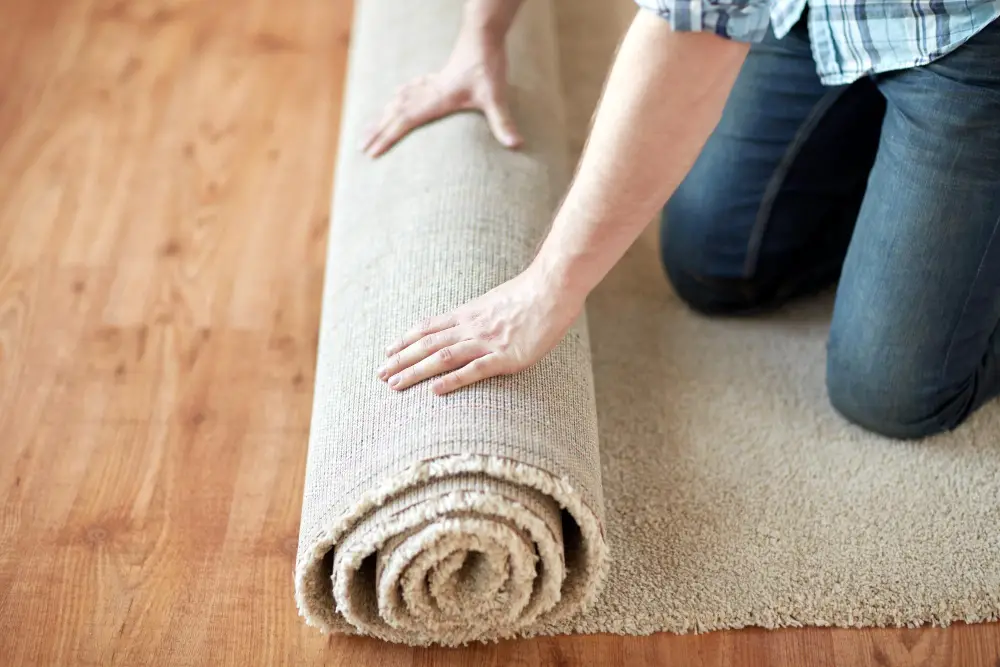
While it may seem like an unnecessary expense, investing in a quality rug pad can actually provide several benefits. First and foremost, a good rug pad will help keep your area rug in place and prevent slipping or sliding on hardwood or tile floors.
This not only makes the space safer but also helps to protect both the floor and the carpet from damage.
In addition to providing stability, a high-quality padding can add extra comfort underfoot by creating an additional layer of cushioning between you and the hard floor surface beneath. It also helps reduce noise levels by absorbing sound vibrations when walking across it.
Another benefit of using a good quality padding is that it extends the life of your area rugs as well as protects them from wear-and-tear caused by foot traffic over time.
How to Size an Area Rug for the Living Room
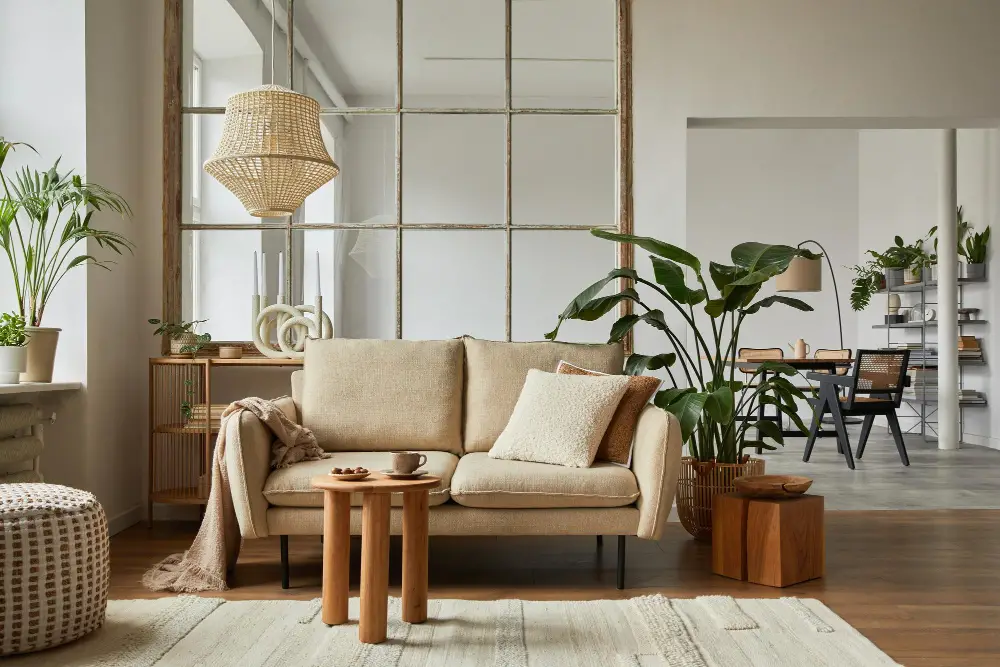
First and foremost, you’ll want to think about the layout of your space. If you have a smaller living room with furniture pushed up against the walls, a smaller rug may be appropriate.
However, if you have larger furniture pieces or an open-concept floor plan that includes multiple seating areas within one large space, then opting for a larger rug can help anchor the different zones.
Another important consideration is proportionality – make sure that your chosen size complements both your couch and coffee table dimensions without overwhelming them or appearing too small in comparison.
To determine what size area rug will work best in your living room setting: measure out the length and width of each piece of furniture (couches/chairs/tables) as well as any other items such as lamps or side tables; add these measurements together; then choose an appropriately sized area rug based on this total measurement.
How to Choose An Area Rug For Under A Coffee Table?

First and foremost, you want the rug to be proportional to both the coffee table and surrounding furniture. A good rule of thumb is that the rug should extend at least 6 inches beyond each side of the coffee table.
Another consideration is shape – if your coffee table is round or oval, consider opting for a similarly shaped rug. If your coffee table has sharp corners or angles, then rectangular rugs may work better.
In terms of material and texture, consider how much foot traffic your living room gets before making a decision. For high-traffic areas with kids or pets running around frequently opt for durable materials like wool or synthetic fibers that can withstand wear-and-tear over time.
Lastly, don’t forget about color! Choose colors that complement other elements in your living room such as wall paint color and accent pillows on couches/chairs etc., but also make sure they don’t clash with any existing patterns already present in space (like curtains). By following these tips when selecting an area rug for under your coffee tables you’ll create an inviting atmosphere perfect for relaxing after long days at work!
FAQ
What size rug is best under a coffee table?
The best rug size under a coffee table is adding approximately 25 inches around the table, ensuring it sits under the front two legs of the sofa.
How big should a rug be under a couch?
A rug under a couch should be at least 6 inches wider than the sofa on both sides, ideally 8 inches, and typically run the length of the sofa, while allowing for a 30 to 36-inch walkway between large furniture pieces, or at least 18 to 24 inches if space is limited.
Should rug be bigger or smaller than couch?
The rug should be at least 6-8 inches wider than the couch on all sides, typically ranging from 8×10 to 9×12 feet in size.
Should I put a rug under a coffee table?
Yes, placing a modest rug under a coffee table can enhance your space’s appearance, protect the floor, and conceal scuffs, bumps, and stains.
How do you choose the right shape and size rug to complement both the couch and coffee table?
To choose the right shape and size rug to complement both the couch and coffee table, ensure the rug is proportional to the furniture, large enough for all legs to fit, and consider the room’s overall design.
Can a rug extend beyond the length of the couch and still aesthetically fit the living space?
Yes, a rug can extend beyond the length of the couch and still aesthetically fit the living space.
How much space should be left between the edge of the rug and the surrounding furniture or walls?
Ideally, 12-18 inches of space should be left between the edge of the rug and surrounding furniture or walls.
